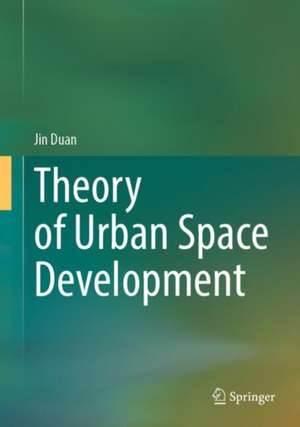Theory of Urban Space Development
Autor Jin Duanen Limba Engleză Hardback – 8 oct 2024
Preț: 906.33 lei
Preț vechi: 1105.28 lei
-18% Nou
Puncte Express: 1359
Preț estimativ în valută:
173.45€ • 188.34$ • 145.70£
173.45€ • 188.34$ • 145.70£
Carte disponibilă
Livrare economică 02-16 aprilie
Preluare comenzi: 021 569.72.76
Specificații
ISBN-13: 9789819751235
ISBN-10: 9819751233
Pagini: 350
Ilustrații: Approx. 350 p. 168 illus.
Dimensiuni: 178 x 254 mm
Greutate: 0.89 kg
Ediția:2024
Editura: Springer Nature Singapore
Colecția Springer
Locul publicării:Singapore, Singapore
ISBN-10: 9819751233
Pagini: 350
Ilustrații: Approx. 350 p. 168 illus.
Dimensiuni: 178 x 254 mm
Greutate: 0.89 kg
Ediția:2024
Editura: Springer Nature Singapore
Colecția Springer
Locul publicării:Singapore, Singapore
Cuprins
Introduction.- Spatial Planning and Urban Space Research.- Connotation and Methods of Space Development Research.- Development Theory and the Scientific Outlook on Urban Development.- The Deep Structure of Urban Space Development- Basic Laws of Urban Space Development.- Morphological Features of Urban Space Development.- Urban Planning Intervention and Spatial Strategy Model.- Modern Urban Design and Human Place Shaping.- China's National Space Master Plan.
Notă biografică
Born in December 1960, Duan Jin is an academician of the Chinese Academy of Sciences, and a National Master of Engineering Survey and Design. Currently he works at Southeast University as a professor, doctoral director, director of the Institute of Urban Space, and chief planner of the Institute of Urban Planning and Design Institute. He was appointed as the director of the first batch of national virtual teaching and research laboratories of the Ministry of Education, and the director of Technology Innovation Center for Space Development and Urban Design of Ministry of Natural Resource. He also serves as a member of the urban and rural planning discipline evaluation group of the National Academic Degree Committee, vice president of the Urban Planning Society of China (UPSC), chairman of the Standardization Work Committee, vice chairman of the Urban Design Academic Committee of UPSC, vice chairman of the Urban Design Experts Committee of the Ministry of Housing and Construction, vice chairman of the Technical Committee on Spatial Planning of the Ministry of Natural Resources, and editor for core journals such as City Planning Review, Modern Urban Research, and Planners.Prof. Duan has dedicated over 30 years to academic research on space development theory and urban planning and design. He is a pioneer in Urban Space Development Theory, introducing the concept of the "Space Gene" and developing analytical and inheritance techniques. His contributions have played a crucial role in addressing contemporary urban development challenges, including environmental degradation and the fragmentation of historical and cultural heritage. Duan's theoretical work is evidenced by over 160 published papers and 15 authored books, for which he has received three first prizes at the provincial and ministerial levels for scientific and technological progress. In the realm of planning and design, Duan has been involved in numerous national and local strategic projects. These include the Xiongan New Area, the Demonstration Zone of Green and Integrated Ecological Development of the Yangtze River Delta, the Jinan Starting Area of the Conversion of Old and New Kinetic Energy, the Core Area of the Youth Olympic Village, and the Suzhou Historic Area. His innovative approaches have earned him 33 international and national awards for planning and design, as well as 18 victories in international competitions.
Textul de pe ultima copertă
This book is a systematic monograph on urban space development theory, exploring the laws of urban space development and the basic principles of planning and design. It clarifies the connotation and methods of urban space development research, highlights the deep structure and four laws of urban space development, expounds the obvious characteristics of urban and regional forms, and discusses the interventional role of urban planning and the development mode of Chinese urban space. It also discusses the methodological change of modern urban design, and forms the principles and core content of China's national spatial planning. Guided by the fundamental principles and methods of development theory, this book follows logical progression from concept to method, from deep structure to manifest form, from macro to micro and from law to planning. By providing readers with a comprehensive and systematic urban space development research system, this book is a valuable read for both researchers and graduate students in urban studies and architectural design. The translation was done with the help of artificial intelligence. A subsequent human revision was done primarily in terms of content.
Caracteristici
Includes over 100 case studies to better elucidate theory Offers a comprehensive and systematic urban space development research system Shares insights into the interventional role of urban planning
